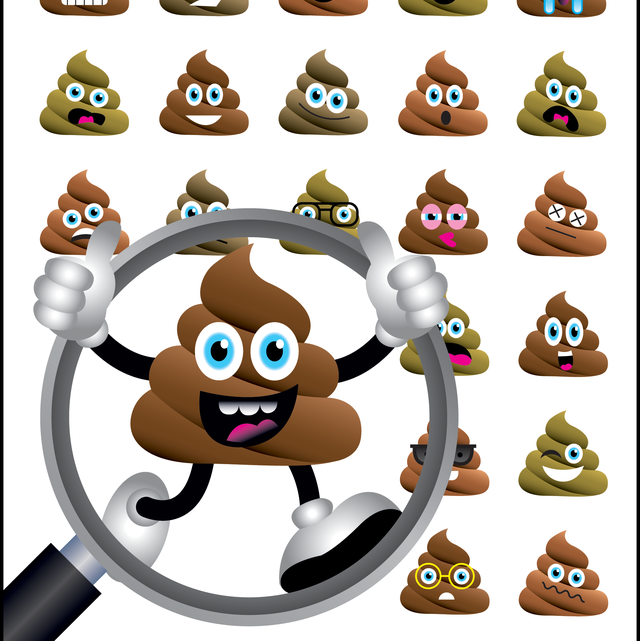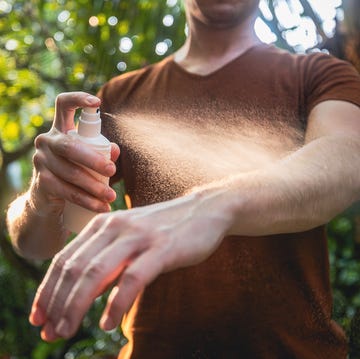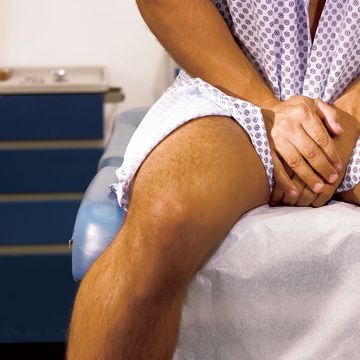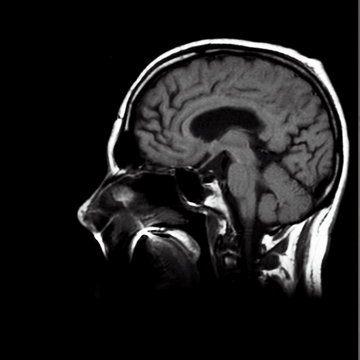Everybody loves to complain about getting a colonoscopy—how it’s a time suck and how emptying your colon is a pain in the, uh, neck—and then not get one. That’s scary when you consider that after lung cancer, colon cancer is the second-deadliest cancer in men. But that’s also why scientists are researching better, easier methods to spot the disease.
Right now a number of screening options are available: stool-sample tests, a blood-sample test, even a virtual test. Tests you can do in the comfort of your own home also require the comfort to basically poop in a cup or on a piece of paper and deal with that sample yourself. Then there are tests that require sedation in a doctor’s office. Most people have no idea about the pros and cons of each or which are easier and/or more effective. Good thing we compiled all the info for you here.
But first, make sure you know when to get a test for colon cancer.
• Get a colorectal cancer test right away if a sibling was just diagnosed with colorectal cancer or if you notice a change in bowel habits that lasts longer than a few days (narrow stools, diarrhea, constipation), you see blood, or you experience stomach pain. You might get pushback from your doc about getting screened, but press for a test, especially because the number of people under the official screening age of 45 who don’t discover their colon cancer until a late stage is increasing. (Here’s more information on why young guys’ colon cancer risk is increasing.)
• Get a test before age 45 if you have a personal or family history of colorectal cancer or polyps; a personal history of inflammatory bowel disease or pelvic radiation; or a hereditary colorectal cancer syndrome, such as Lynch syndrome or familial adenomatous polyposis. If a parent or sibling had colon cancer, you should get your first screening ten years before the age they were diagnosed, says Ankit Sarin, M.D., a colorectal surgeon at the University of California, San Francisco.
• Test for colorectal cancer at age 45 if you’re at average risk, meaning you don’t have any of the aforementioned risk factors.
Best Tests for Colorectal Cancer
Highest Effort, Highest Accuracy: Colonoscopy
Docs consider colonoscopy the gold standard; patients gripe about the prep. Yet it’s still the best test we have—and plenty of people say, “It’s not that bad.”
What happens: You chug laxatives at home, then a doctor scopes your colon for polyps. If any are found, they can be removed and sent to a lab for analysis to determine if they’re cancerous, precancerous, or noncancerous.
What’s to like: You get a screening, diagnosis, and removal all at once, says Danielle Turgeon, M.D., a gastroenterologist specializing in colon cancer at University of Michigan Health. You only need to do the procedure every ten years if you’re at average risk and nothing suspicious is found. (It’s every three to five years if you have polyps, and every one to three if you’re considered high risk.) Plus, if any alternative tests find polyps or suspect cancer, you must follow up with a colonoscopy anyway. Another bonus: During the 30- to 60-minute procedure, you don’t have to do a damn thing—sedation is recommended—though you will need someone to drive you home after. Some people do forego sedation; how comfortable it is and isn’t varies (here's a thorough explanation).
What’s not to like: It requires some work—making the appointment, picking up the laxative prescription, staying close to the toilet to empty your colon, and doing a clear-liquid fast the day before and the day of the procedure. You’ll also need to take a full or half day off work to undergo the procedure and recover from sedation. People who don’t want to (or can’t) take time off sometimes opt for a no-sedation colonoscopy. It’s not for the faint of heart. Expect cramping-like discomfort—“similar to how diarrhea can be painful”—as the scope moves around your GI tract, says Dr. Turgeon.
The bottom line: “Colonoscopy has the highest sensitivity not just in detecting cancer but also in detecting polyps,” says Dr. Sarin. The test can detect cancer with 95 percent accuracy.
Medium Effort, Good Accuracy: Multitarget Stool DNA Testing (Cologuard)
The second most accurate in detecting cancer after a colonoscopy, this test allows you to do the noninvasive stuff at home.
What happens: You collect your poop and send it to a lab, which looks for blood and any DNA mutations associated with colon cancer or abnormal polyps.
What’s to like: No time off needed. Do it once and you’re good for three years.
What’s not to like: It’s still work. First, you need a prescription for a mail-order kit. Next, you aim your poop into the kit’s cup, which fits over the toilet. (Handy!) But before you put the lid on and ship it off, you have to scrape a small sample into a vial. (Nasty!) You then pour a preserving liquid into the main container, close it up, and send both parts of the sample for testing within 24 hours. If results are positive, you’ll still need a colonoscopy. (Surprise!)
The bottom line: “It’s a great test for the person that has no risk factors for colon cancer and does not have any symptoms,” Dr. Turgeon says. This type of test is 92 percent accurate in detecting cancer.
Low Effort, Okay Accuracy: Fecal Immunochemical Test (FIT)
Collect a stool sample at home and send it off for testing. This one requires no Rx, though—just buy a kit online and it ships to your home.
What happens: You poop onto a piece of paper spread across the toilet bowl, scrape a sample, stick that sample in a small bottle, and mail it to a lab that looks for blood in the stool. Some kits, such as EZ Detect and Second Generation FIT, even let you test the stool sample immediately at home, with results delivered within five minutes.
What’s to like: No time off needed.
What’s not to like: Uh, scraping around in your poop? That can be too much for some people. And if you’re going to go this route, you have to commit to doing it Every. Single. Year.
The bottom line: Research suggests FITs correctly identify people with colon cancer 74 percent of the time, though the tests are not as good at detecting polyps as a colonoscopy or multitarget DNA test, Dr. Sarin says.
What to Know About 4 Other Tests
The above tests are the major and most-reccommended options, but they’re not the only ones. These four are also in the mix. Here’s what to know about each:
1. Guaiac Fecal Occult Blood Test (gFOBT)
The gFOBT uses a chemical called guaiac to detect blood in the stool. The test isn’t as accurate as a FIT or multitarget DNA test and has a higher rate of false results. This test is most often used in limited-resource settings.
2. CT Colonography
This virtual colonoscopy takes CT images of your colon. It works, but accessibility may be an issue. It’s often conducted on patients who aren’t good candidates for a colonoscopy (e.g., anyone with severe cardiac disease).
3. Flexible Sigmoidoscopy
It scopes the lower third of your colon. Depending on where you live, a sigmoidoscopy might be more available than a colonoscopy, and it can be done without sedation, though it’s not as thorough. Docs typically combine it with a FIT.
4. Methylated septin 9 (mSEPT9)
This blood test is FDA approved for people 50 and older of average risk who have refused other screening methods, but it’s not as accurate as the other tests. Leave this one on the shelf for now.
A version of this story appeared in the December 2022 issue of Men’s Health.













